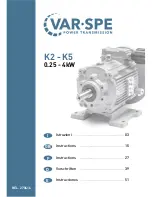
Not
for
Reproduction
WARNING
Fuel and its vapors are extremely flammable and explosive.
Always handle fuel with extreme care.
Failure to observe these safety instructions can cause a fire
or explosion which could result in serve burns or death.
• Do not add fuel while engine is running. Let the engine
cool at least 2 minutes before adding fuel.
• Fill the fuel tank outdoors only, using an approved fuel
container with the unit directly on the ground.
• Keep fuel away from sparks, open flames, pilot lights,
heat, and other ignition sources.
• Allow any spilled fuel to evaporate before starting the
engine.
• If fuel is spilled on clothing change clothing immediately.
1.
Slowly remove the fuel cap (A, Figure 4) and fill the tank
(B) with fuel. Do not fill higher than the bottom of the fuel
tank neck (C).
2.
Reinstall the fuel cap. Allow any spilled fuel to evaporate
before starting the engine.
4
Starting Engine
WARNING
Fuel and its vapors are extremely flammable and explosive.
Always handle fuel with extreme care.
Failure to observe these safety instructions can cause a fire
or explosion which could result in serve burns or death.
• Ensure that spark plug, muffler, fuel cap, and air cleaner
(if equipped) are in place and secured.
• Do not crank the engine with the spark plug removed.
• Do not use pressurized starting fluids because their
vapors are flammable.
• Do not over-prime the engine. Follow the engine starting
instructions in this manual.
• If the engine floods, set choke (if equipped) to
OPEN/RUN position, move throttle (if equipped) to FAST
position and crank until engine starts.
1.
Ensure the auger control (A, Figure 5) and traction control
(K) are disengaged.
2.
Turn the fuel shut-off valve (C) (if equipped) to the Open
position.
3.
Move the throttle control (D) (if equipped) to the Fast
position.
4.
Insert the ignition key (E) and turn it to the ON position or
insert the push/pull key.
5.
Turn the choke control (F) to the Closed position.
Note: Choke is usually not needed when starting a warm
engine.
6.
Press the primer (G) two times.
Note: Primer is usually not needed when starting a warm
engine.
8









































